Pre-cooling and hydrocooling technologies.
 31.03.2025
31.03.2025 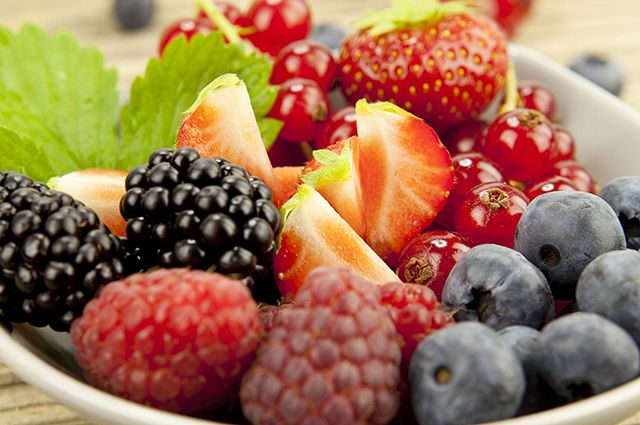
Ukraine is a promising country for growing berries and vegetables. According to the State Statistics Service, in 2024, exports of fruit and berry products increased by almost 50%. Despite Russia’s military aggression, Ukrainian companies continue to expand their presence in the global berry market. In addition, thanks to government support, the grant programme for the cultivation of fruit and berry and nut crops has been successfully operating for three years in a row. Therefore, it is not surprising that last year Ukraine became the world’s first largest berry exporter in terms of growth rates in the first five seasons. Obviously, berries can bring a considerable profit to a producer if the harvest is taken care of in time. Pre-cooling and hydrocooling technologies will help to do this.
Pre-cooling: technology features and benefits for manufacturers
Cooling is one of the main ways to preserve the quality of berries, fruit and vegetables. However, pre-cooling is often underestimated.
Pre-cooling of fruits – precooling – is the process of rapidly reducing the initial (post-harvest) temperature of fruits to the temperature required for further technical operations (transportation, short-term or long-term storage).
If the produce is sold directly from the field, there is no need for pre-cooling.
Why is pre-cooling so important? Rapidly reducing the temperature of the fruit after harvest is the first step to success. The faster the temperature of the fruit drops after harvesting, the longer the berries and fruit retain their flavour and appearance.
And the maximum shelf life of berries is 4 hours after harvest. Unlike apples, berry and stone fruit crops are very sensitive to temperature changes.
Studies have shown that if the process of pre-cooling fruits, berries and vegetables is delayed by one hour, the shelf life will be reduced by one day. Therefore, freshly picked fruit must be pre-cooled immediately after harvest.
We offer fruit, berry and vegetable growers several pre-cooling solutions that can be applied immediately after harvest.
Pre-cooling
The cooling process is carried out by forcing cold air to pass through the product at an accelerated rate to the required temperature through a ventilation system.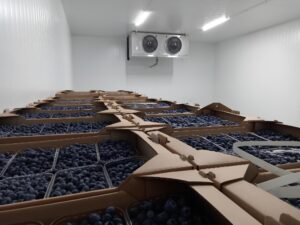
After all, when excess heat is removed from the product, its quality is guaranteed to improve. If you place a sensor in a box of berries after pre-cooling, the temperature will be the same everywhere: on the surface and at the bottom. This is very important, for example, for successful cooperation with retail chains.
Pre-cooling significantly reduces the intensity of fruit respiration, which increases their shelf life. Pre-coolling slows down biochemical reactions in cells and, as a result, reduces nutrient and water loss. This process also helps prevent the development of fungal and bacterial infections on fresh fruit.
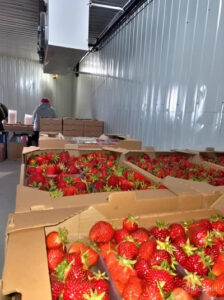
Fruits, berries and vegetables after precooling look much fresher on store shelves than products that are placed for sale without pre-cooling. Ultimately, this increases the profitability of transporting, storing and selling products. Due to the positive impact on fresh fruit, precooling technology is successfully used in Europe.
It is also becoming increasingly popular in Ukraine.
In preconditioning plants, it is recommended to use containers whose walls do not interfere with the passage of air between the products. The precooling units offered by RalсoTechniс have an advantage. There is a seal on the bottom and on the outside of the precooling unit that works like a suction cup. Thanks to this, the fruit is placed more tightly in the container, and the air flow through the berries on the pallet is better.
RalсoTechniс is constantly improving, increasing the power of the fans that pump air through the entire berry, even if it is placed in a container other than perforated.
Depending on the technical solution offered by RalсoTechniс, the capacity of the precooking plants can range from 250 to 4000 kg per hour.
Hydro-cooling: the essence of technology
Hydro-cooling is the result of cooperation between RalcoTechnic and a European manufacturing partner. It is an engineering solution for almost instantaneous cooling of fruits and berries in a hydro-tunnel, where ice water reduces the temperature of the fruit and preserves its freshness. Hydro-cooling technology is especially effective for stone fruits such as cherries, cherries, and peaches. Sometimes, hydro-coolers are used to cool sweet corn.
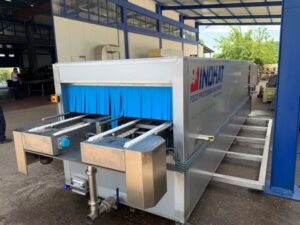
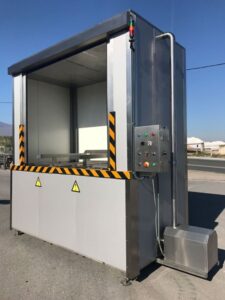
Stone fruits, as well as some capricious vegetables, are extremely vulnerable to the merciless heat and delays in harvesting. They quickly wither and spoil, causing losses to producers. Every minute of waiting in the sun leads to dehydration, shrivelling, darkening of the stems and loss of precious weight. The fruits become dull.
The salvation is the process of hydro-cooling, which can preserve the freshness and appearance of the fruit.
The hydrotunnel uses ice water to remove heat from the produce using a closed water circulation system that saves energy and water.
Types of hydro coolers
There are several types of hydro coolers.
Tunnel-type hydrocoolers for pallets loaded with boxes (perforated ‘bananas’) of products.
The advantage of this type is that the forklift puts the pallet directly on the conveyor belt of the hydro cooler on one side, and in a few minutes the same pallet comes out on the other side with chilled products.
Tunnel-type coolers for boxes of products brought from the field. On one side of the hydraulic cooler, workers load these boxes. On the other side, the chilled products in the boxes are unloaded, placed on a pallet and transported to a chamber to await shipment.
Static (cabinet) type hydraulic coolers for pallets loaded with boxes (perforated ‘bananas’) with products. The convenience of this type of hydro cooler is that the forklift puts 1 to 3 pallets in a row in the middle of the device, then closes the curtain, and the inside is cooled with ice water.
All types of hydro coolers can be conveniently placed either on an open ramp for easy forklift access, or in a room where there is free forklift access with goods.
For the convenience of using more common pallets with dimensions of 1200 x 800 mm, an individual order can be made to accommodate 3 pallets with a loading side of 1200 mm at once.
The base of the hydro cooler – the tunnel and the body, as well as the heat exchanger – are made of AISI 316L stainless steel, which guarantees not only the durability of the unit, but also perfect compliance with the strictest requirements of the food, hygiene and pharmaceutical industries. The refrigeration equipment that keeps the hydro cooler cool is assembled exclusively from European components, each element of which is confirmed by Ukrainian and European quality certificates of ISO 9001. The heat exchange equipment of the refrigeration unit is carefully
selected and adapted for uninterrupted operation even in hot conditions.
The capacity of the hydro coolers offered by RalcoTechnic ranges from 1000 to 3000 kg/h.
“RalcoTechnic” specialises in the development and implementation of industrial refrigeration systems for manufacturers and traders of agricultural products.
We work with agricultural enterprises, retail chains, logistics centres, meat processing plants and other businesses that are critical to meeting sanitary, energy efficiency and environmental standards.
The company has been operating in the market for over 15 years and has demonstrated the effectiveness and reliability of its engineering solutions, which have resulted in successfully implemented projects in Ukraine and abroad.
One of the important aspects of our work is that we have experience in implementing various solutions specifically for the production, processing and storage of fruit and berry products at facilities of various sizes: from small agricultural companies to large agricultural complexes and logistics centres.
The company develops individual projects that meet specific customer requirements. In addition, the company offers a wide range of services: from design and installation of refrigeration systems to their maintenance and modernisation.
 Sales department
Sales department 



